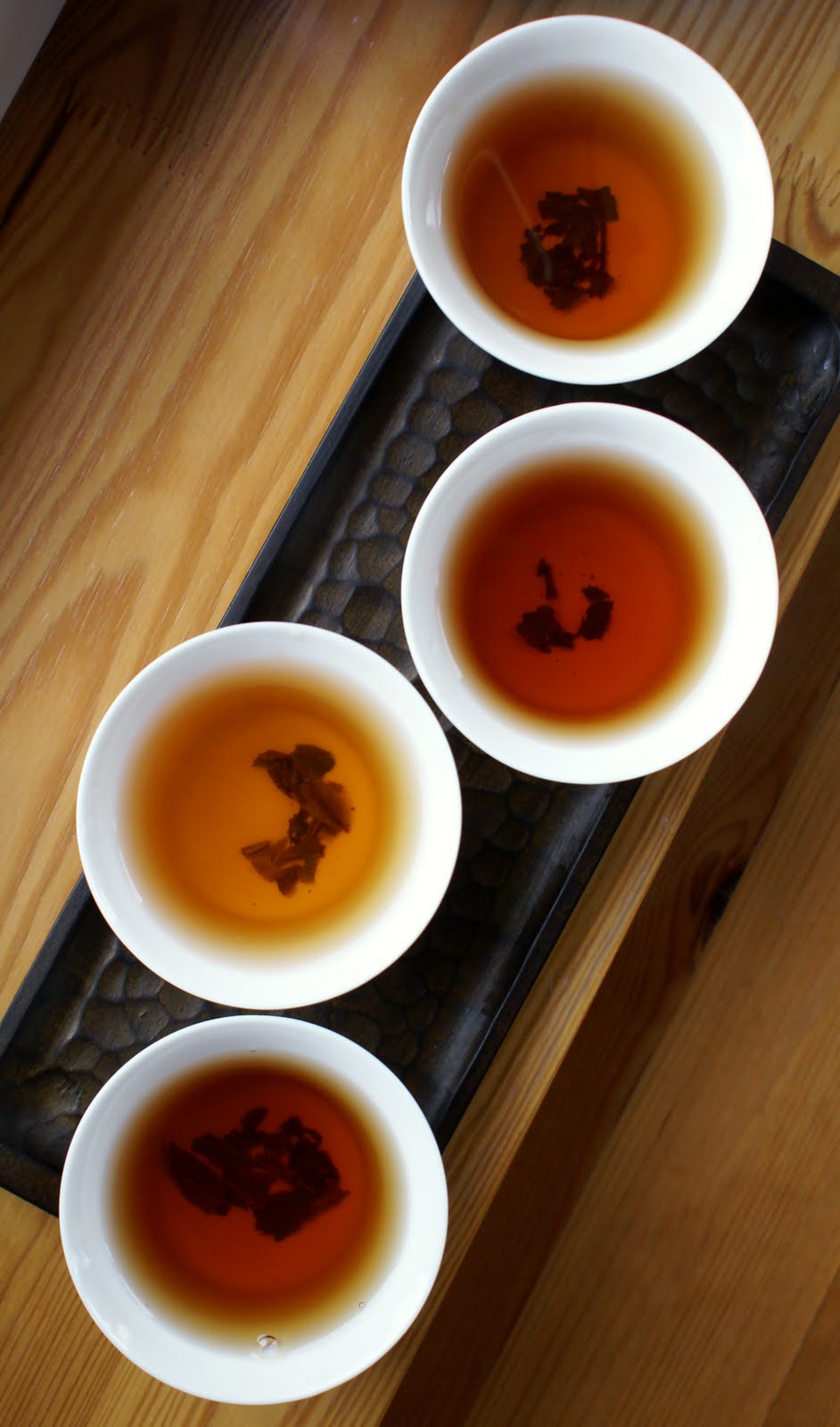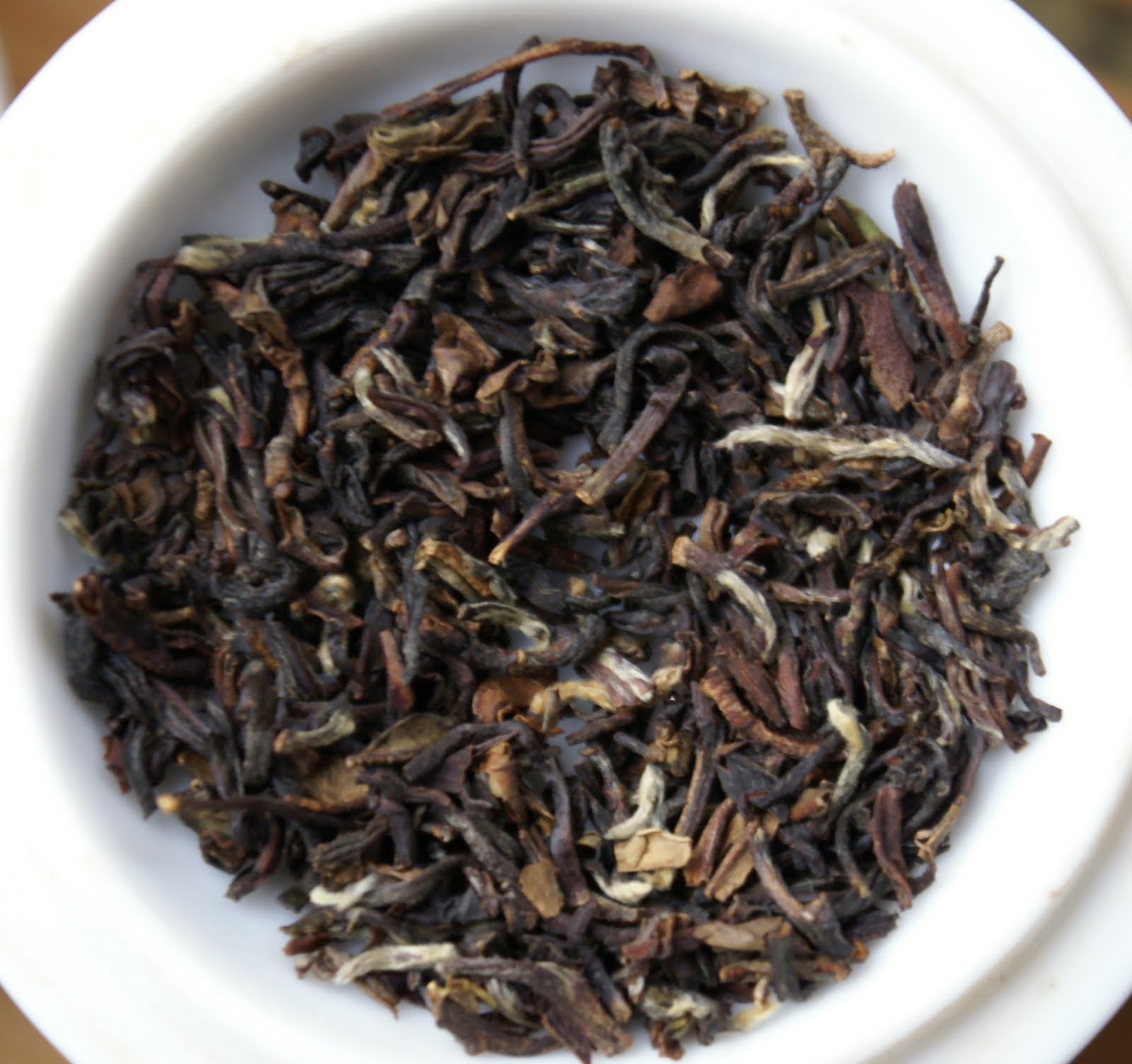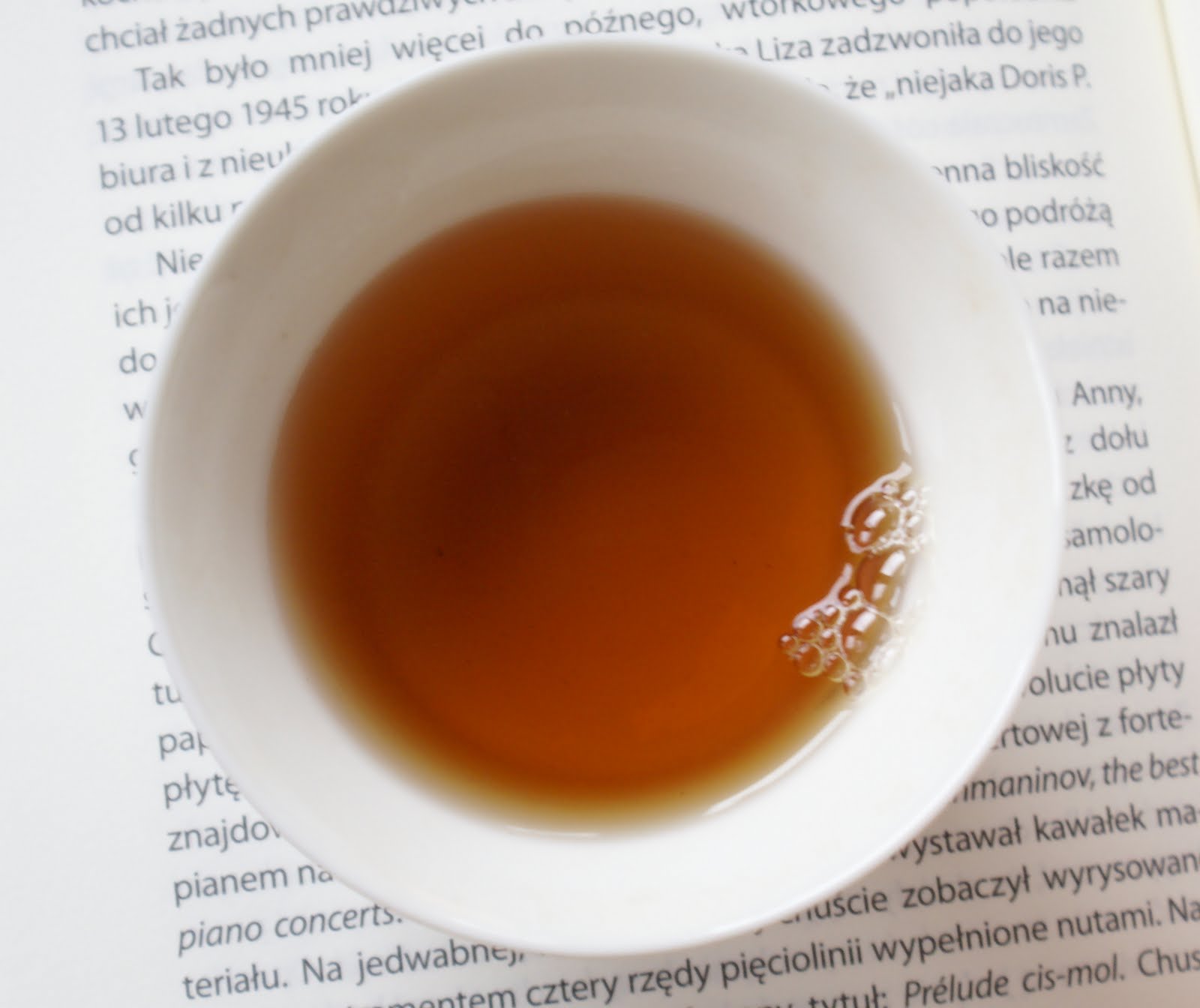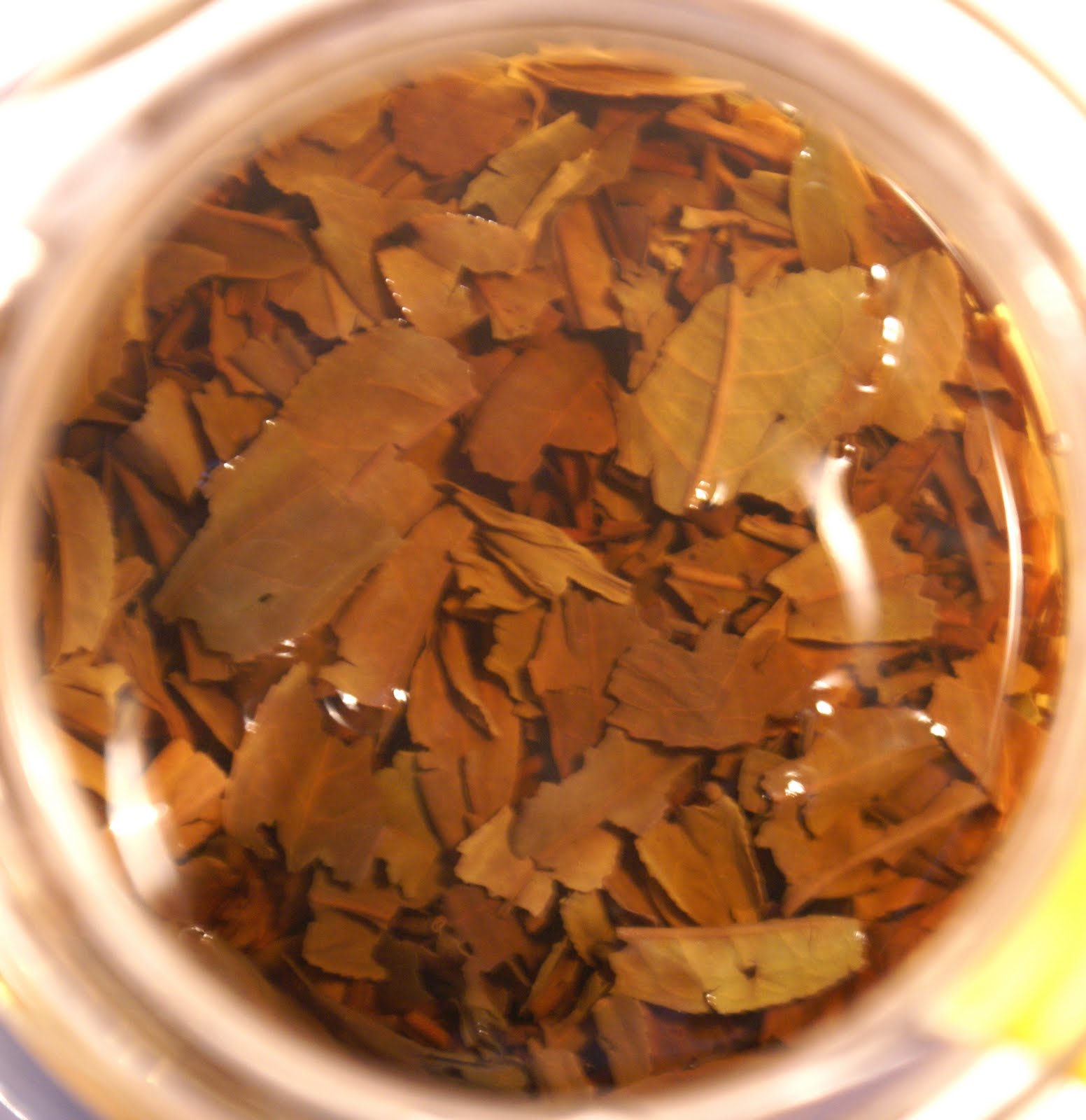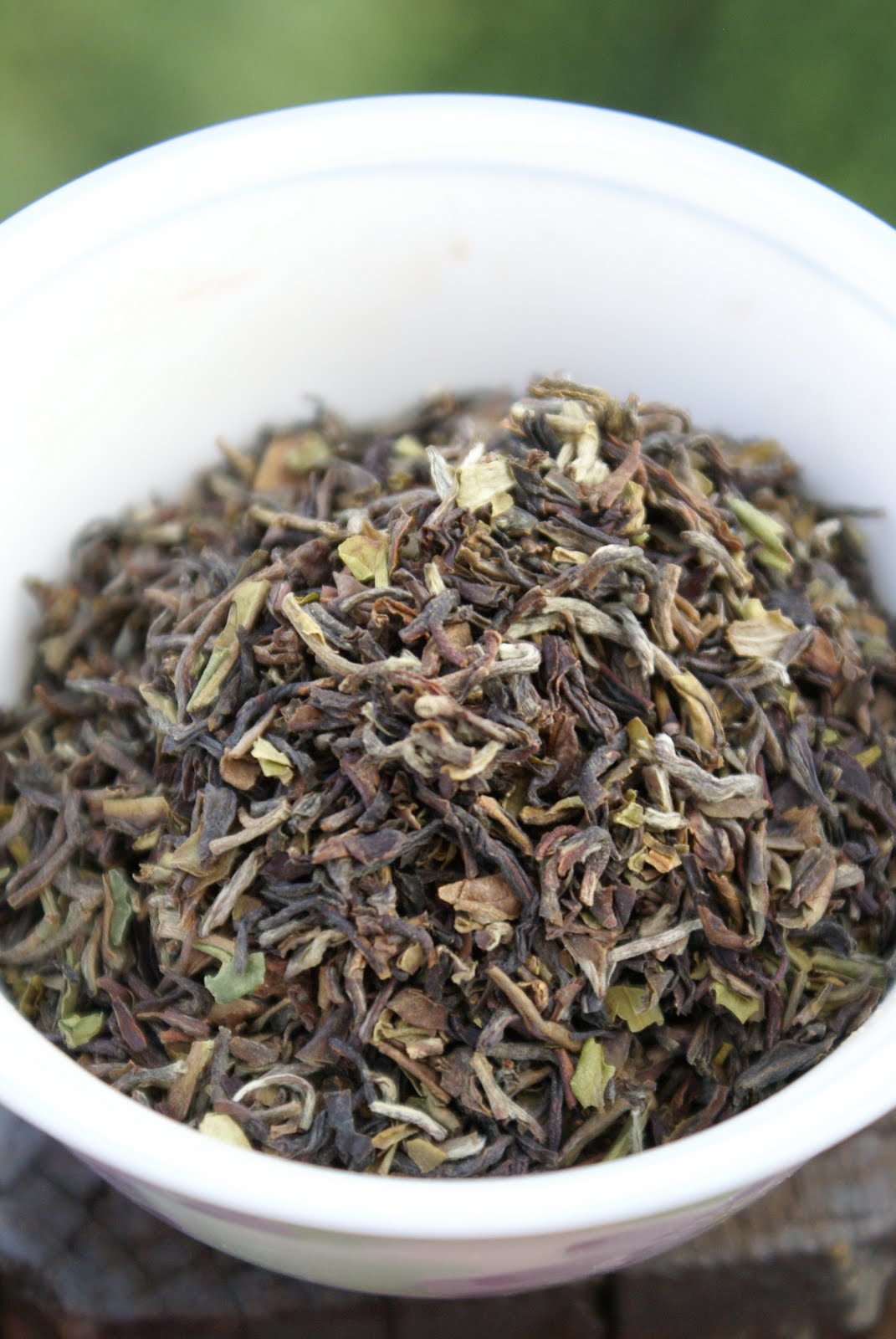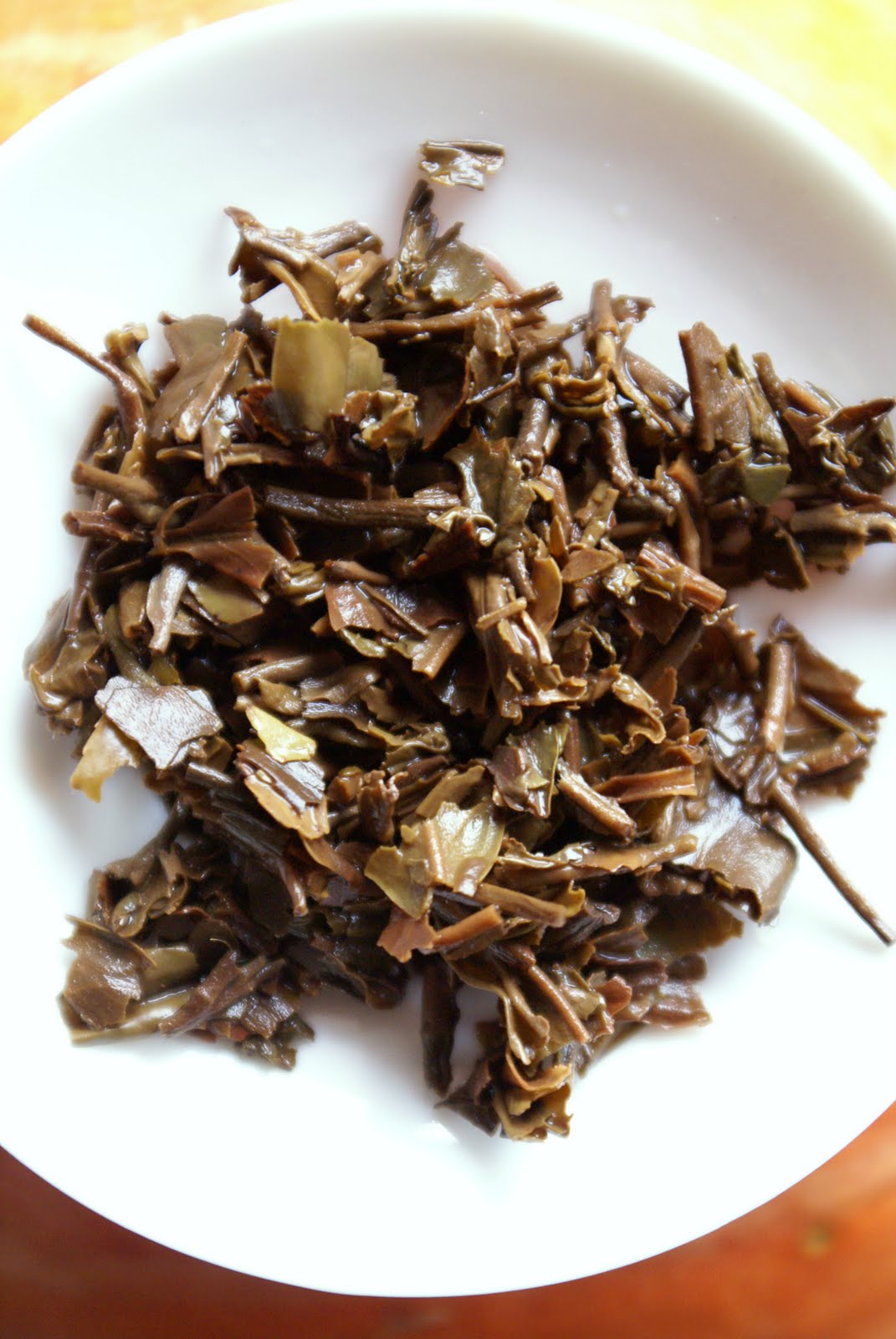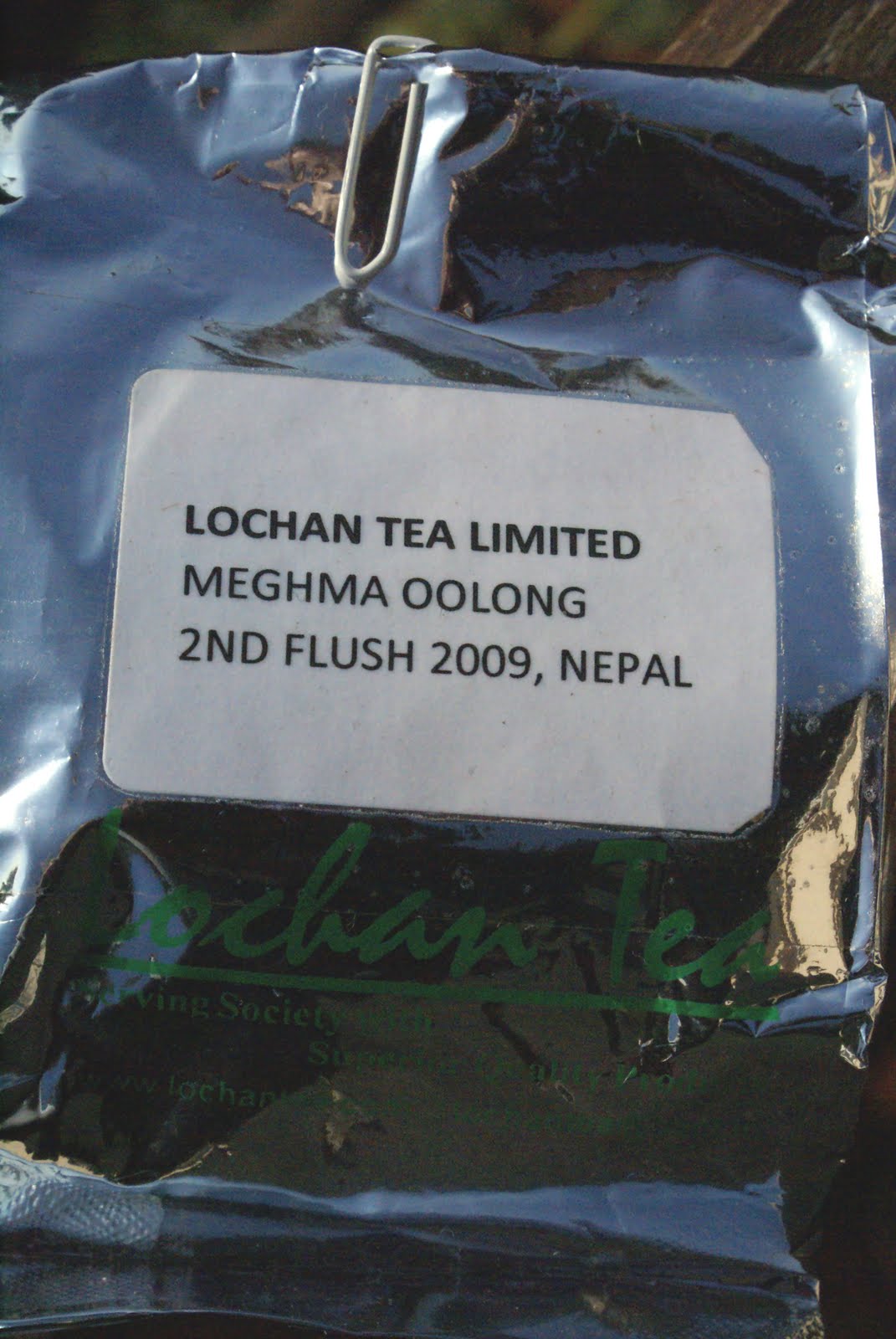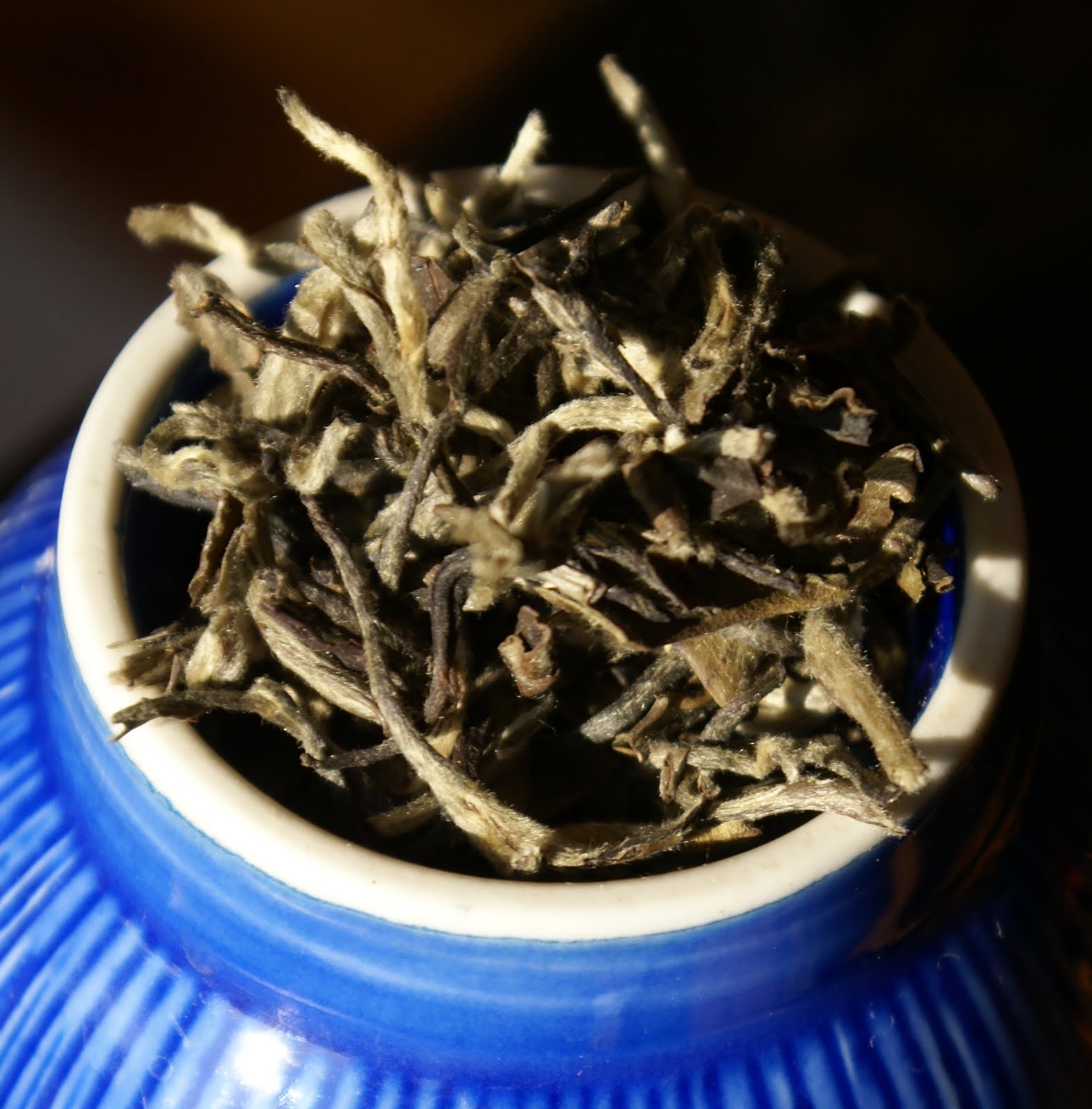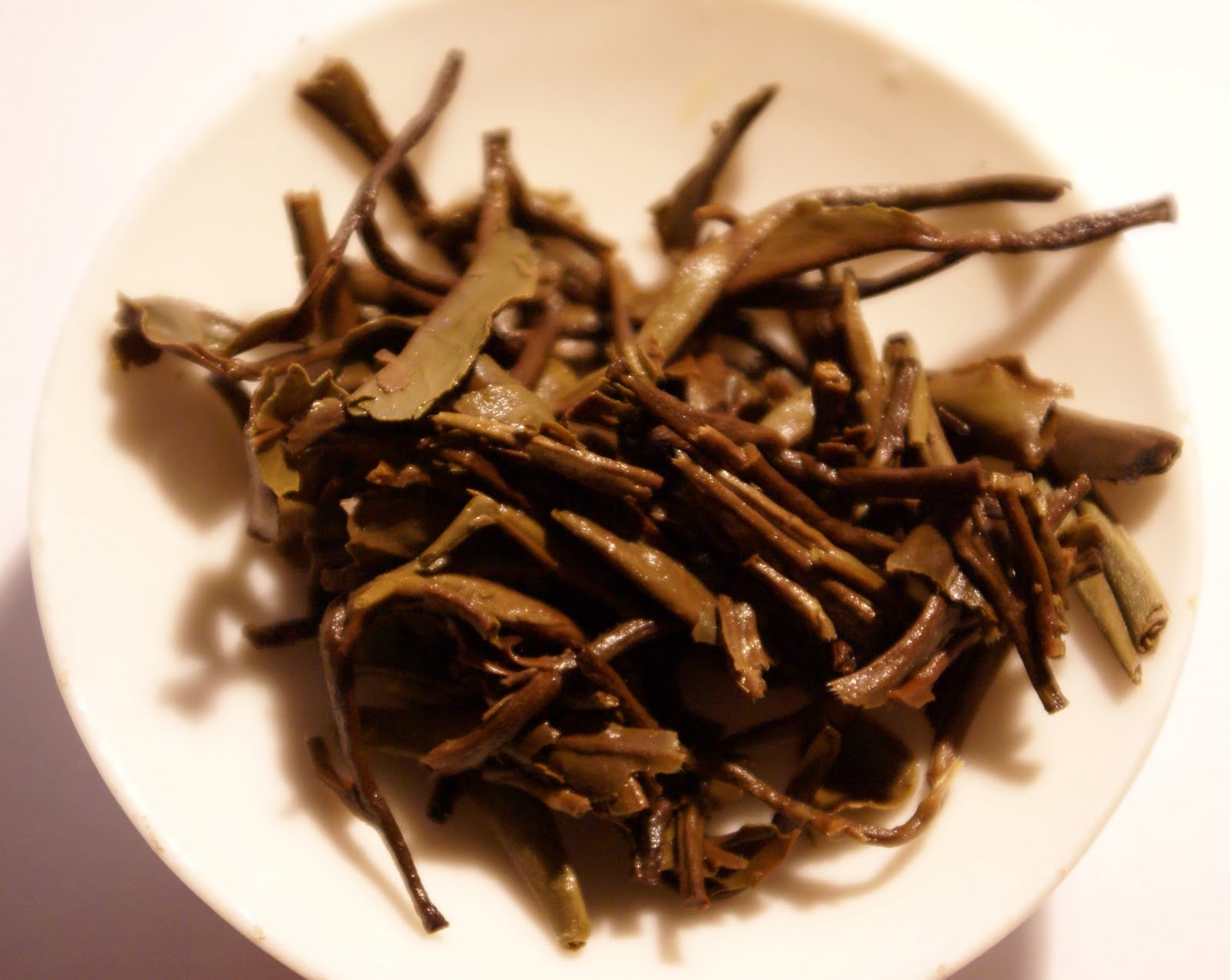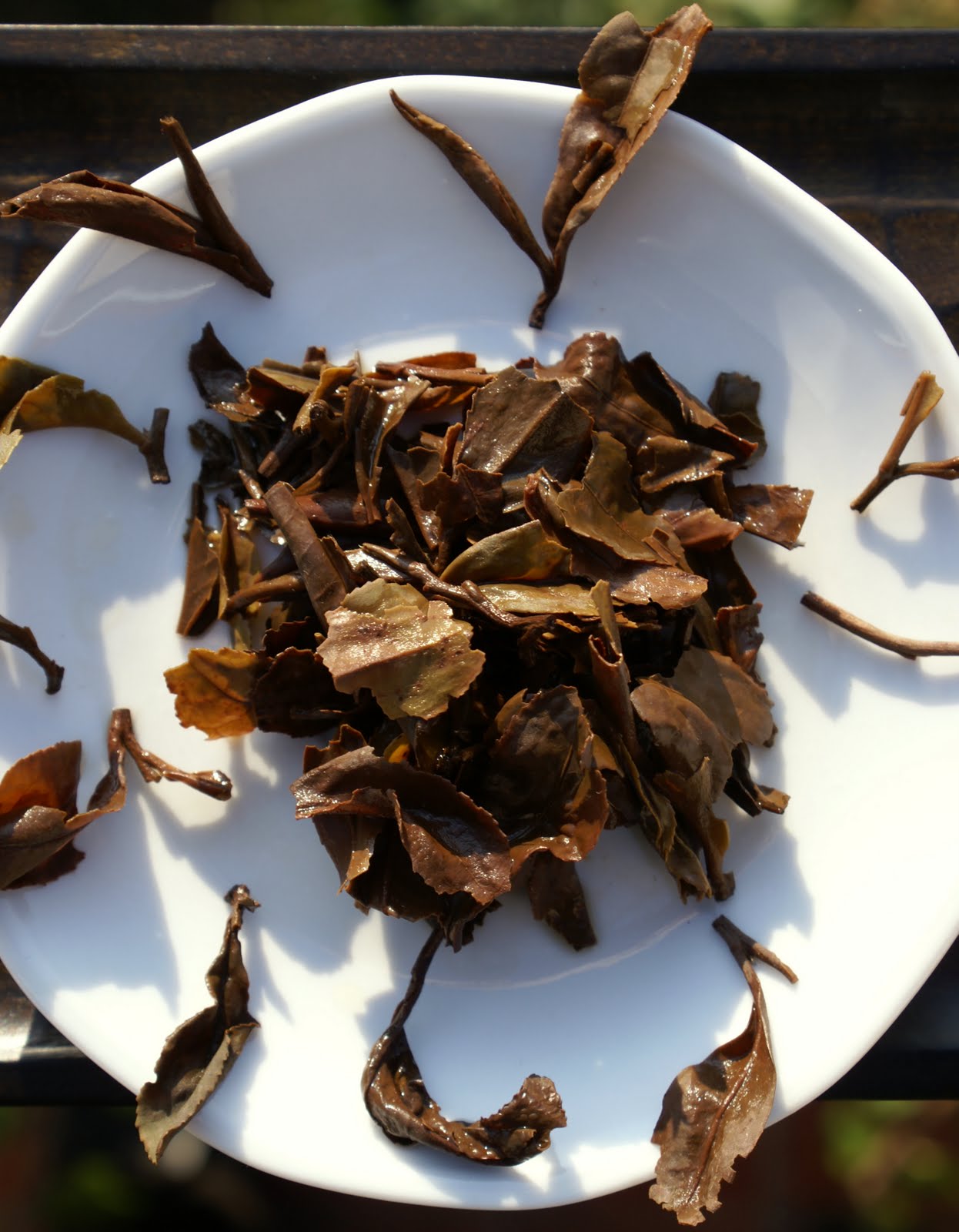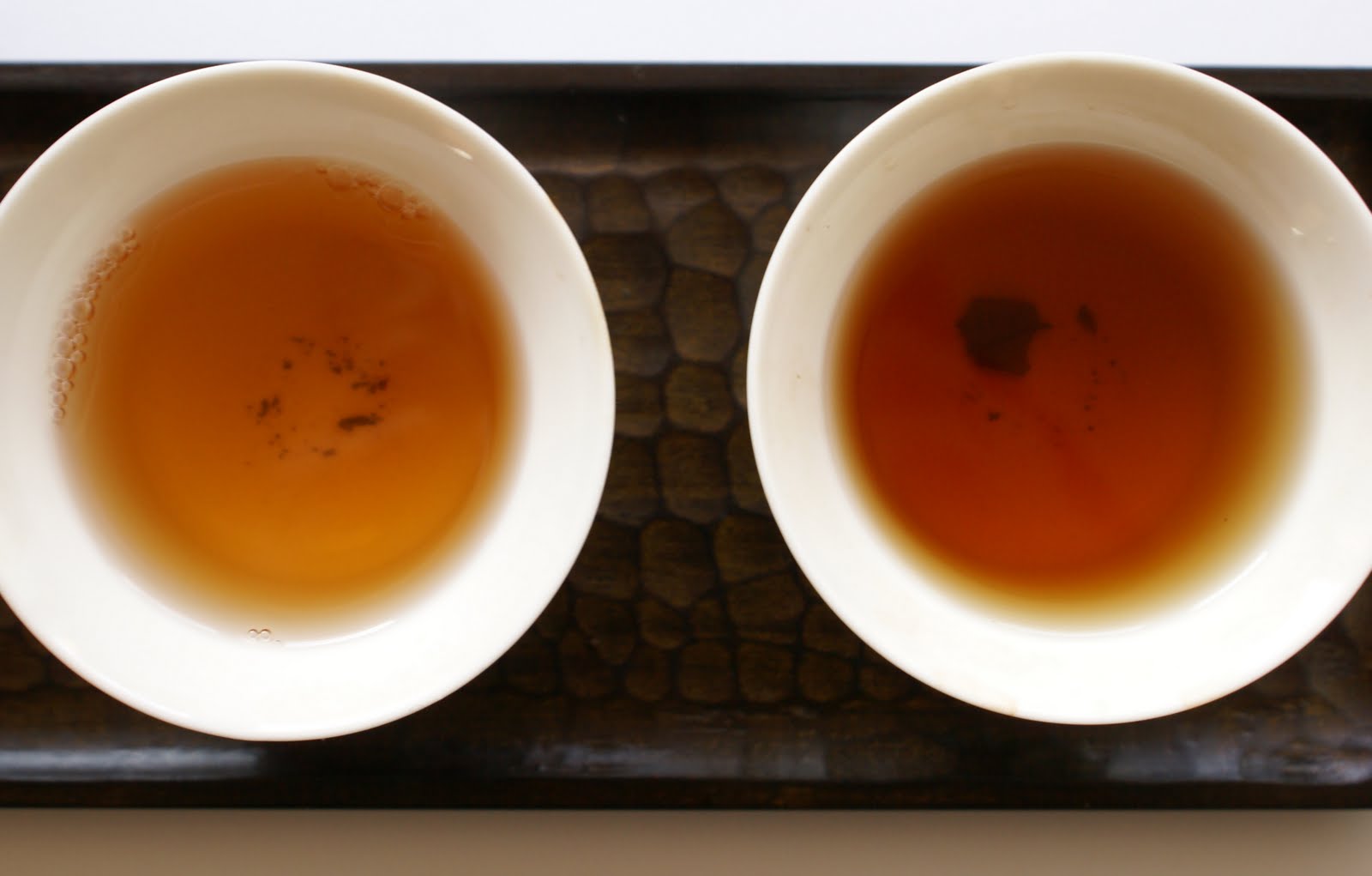As part of the ongoing Lochan Tea Co. online tasting on Facebook (see here
for their profile and contact them if you’d like to enroll for the second
round, to be organised soon), I’m tasting the 2009 Oolong from Meghma Estate in Nepal, and thought I’d compare it
with a 2009 2nd Flush Oolong from
Glenburn Estate in Darjeeling which I got also from Lochan earlier this
year.
Darjeeling and Nepal have historically specialised in black teas. However
with the increasing popularity of new types of tea in the West, the market
pressure on Himalayan tea producers is to introduce green, white, yellow, and
oolong (semi-oxidised) styles. These remain marginal but it’s interesting to
compare them with the classic Chinese examples.
The usual feeling is one of disappointment. Indian greens and oolongs
are rarely exciting and often fall short of ‘the real thing’. It’s important to
say that non-black teas in the Himalayan regions are produced with the same tea
plants that yield black tea (in China, it’s almost always a separate tea
cultivar, although green and black tea are produced from the same leaves in
some regions, and classic oolong varietals such as qingxin and tieguanyin
are occasionally used for black tea in Taiwan). And it’s also often argued that
Indian tea makers lack the expertise linked to green and oolong production in
China – although tea manufacture might seem a simple task there’s a number of
intricate processing steps such as wilting, roasting and rolling that need to
be very carefully timed.
I think no-one would argue there’s no oolong in India at the moment that
can challenge the iron-cast structure and longevity of a Dahongpao, or the
inimitable buttery texture of a high-grown Lishan from Taiwan. Green tea is
more open to debate but being produced from tea plants suited for black tea,
with its tannins and deep taste, Darjeeling green teas usually lack the finesse
and lightness of the best Chinese examples. Yet I often feel it’s a bit unfair
to compare the two. Indian (and Nepalese) green and oolong tea need to find
their own original style. The two teas tasted here go some way along that path,
I felt.
The 2009 Glenburn Estate Oolong is a 2nd flush tea with strange looks: as much as 40–50% tips mixed with small, fragmented, ‘black’
Darjeeling-looking young leaves, but with a silvery and green colour. Smell is
equally odd: a democratic mix of oxidative black-tea herby pungency and puer smokiness. The puer reminiscence continues on the nose and palate of the brewed
tea.
Brewed competition-styled (2g of leaf for 5 minutes), this is coming
really close to a black tea both in body and in the chewy, earthy register, but
when dosed high at ~4g and brewed gongfu-style
like a Chinese oolong, the oxidation is lower (~50% I guess), the whole is
lighter, a little walnutty, and generally lacks grip. (I prefer a longer infusion
here). Not so much texture or intensity at mid-palate but a decent profile.
Perhaps wrong to expect this to conform to any known Chinese or Taiwanese
oolong type: it’s just tasting of a slightly less oxidised Darjeeling.
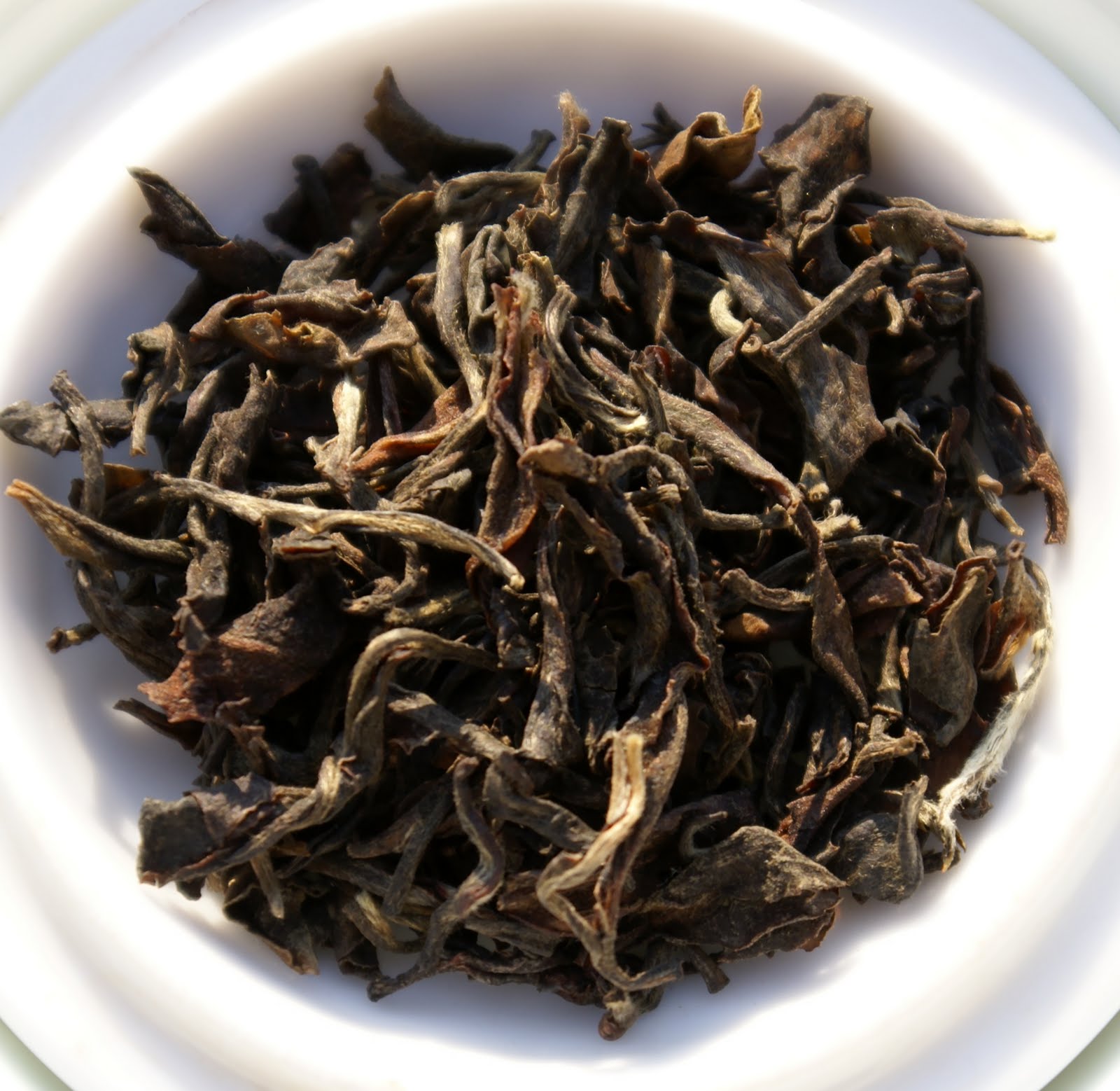
The 2009 Meghma Estate (Facebook
profile) Oolong (also a 2nd
flush) is another modified-Darjeeling ‘oolong’, but a more successful one. The
oxidation is higher (~70%), and the dry leaf appearance is quite different:
fewer tips, medium-sized leaves that seem a little larger than those used for
black tea. The dry leaf aroma is very smokey and mildly spicy, with a vague
reminiscence of Oriental Beauty from Taiwan. Really good leaf quality here: it’s
no coincidence the tea also tastes good. Look at the expired leaf
photo with its intact bud-and-leaf systems:
I followed the Lochan recommended parameters (4g of leaf / 250ml boiling
water / 3 minutes) and unlike the 2009 Doke 2nd Flush Silver Needle white tea
tasted on Facebook yesterday, found them very successful. While the steeping
is a bit longer than I would have dared on my own, the result is a flavourful
and balanced tea, not overbrewed
and only medium-bodied, lighter in colour than expected:
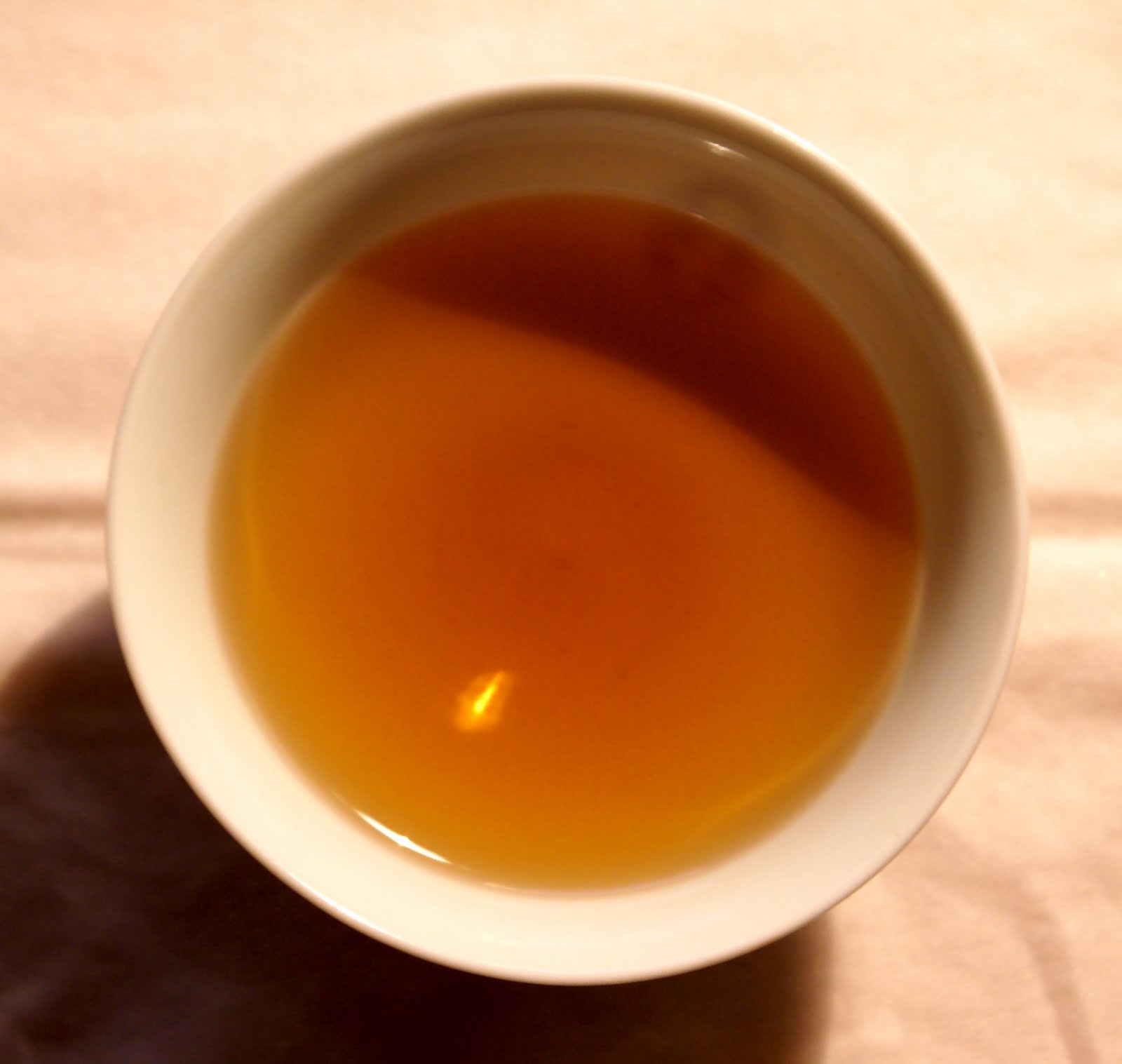
A simple tea as befits its small-size leaf, this has in
fact quite a bit in common with a Darjeeling-styled black tea, including a
bergamottey and dried fruits spiciness, but lacks the tannins and remains a
little lighter. Interestingly but consistently with the wet leaf appearance the
subsequent brewings taste much like a ‘redded’ (partly oxidised before the shaqing stage of processing) puer, and share that crisp beany
character and a similar chewy constitution to the tannins. A gongfu session on lots of leaf and 30s,
20s, 30s etc. steeps yields similar results: initially very smokey, later with a
more pronounced black tea dryness.
In short, this has nothing to do with a Chinese or Taiwanese oolong but
builds a style of its own: that of a less-than-fully oxidised black tea,
lighter in body and less astringent but similarly flavoured to a Darjeeling (of
the more chunky style). Is there any interest in that? I would say so.
Glenburn 2009 Oolong (left, 1st infusion, 30 seconds), Meghma 2009 Oolong (right, 3rd infusion, 30 seconds):
the difference in oxidation is clear.
 The 2nd flush Imperial Muscatel is well-presented with largish leaves and few tips; it has a very exciting scent of milk chocolate and other complex notes of herbs and dried fruits. Reasonably deep-coloured, it is all about harmony and complexity. It exudes a sense of calmness, depth and dimension. The tannins are very fused into a broad, almost mellow whole, although the tea by no means light. There’s a ripe, summery sense of second-flushness to this, quite different to the herby drive of the above FF. The empty cup aroma is especially noteworthy: summery, warm, spicy. (The famous muscatel scent escapes me here, though).
The 2nd flush Imperial Muscatel is well-presented with largish leaves and few tips; it has a very exciting scent of milk chocolate and other complex notes of herbs and dried fruits. Reasonably deep-coloured, it is all about harmony and complexity. It exudes a sense of calmness, depth and dimension. The tannins are very fused into a broad, almost mellow whole, although the tea by no means light. There’s a ripe, summery sense of second-flushness to this, quite different to the herby drive of the above FF. The empty cup aroma is especially noteworthy: summery, warm, spicy. (The famous muscatel scent escapes me here, though).  Another 2nd flush is the FTGFOP1 Clonal. This one is fairly light, as preannounced by the leaf which is greener and tippier than even the FF here, with an intense smokey-bergamottey aroma. The cup is light-coloured (see photo at top of page, second bottom), peachy-amber in colour, with an exciting if short-lived aroma of fresh leaves, mown grass, freshly polished wood, with subsidiary notes of fresh summer fruits (peaches). Astringency is there, ending the palate progression in a crescendo. A nice tea, much more first than second flush in character, and if not compared to the vastly superior Imperial Muscatel above, really quite good.
Another 2nd flush is the FTGFOP1 Clonal. This one is fairly light, as preannounced by the leaf which is greener and tippier than even the FF here, with an intense smokey-bergamottey aroma. The cup is light-coloured (see photo at top of page, second bottom), peachy-amber in colour, with an exciting if short-lived aroma of fresh leaves, mown grass, freshly polished wood, with subsidiary notes of fresh summer fruits (peaches). Astringency is there, ending the palate progression in a crescendo. A nice tea, much more first than second flush in character, and if not compared to the vastly superior Imperial Muscatel above, really quite good. 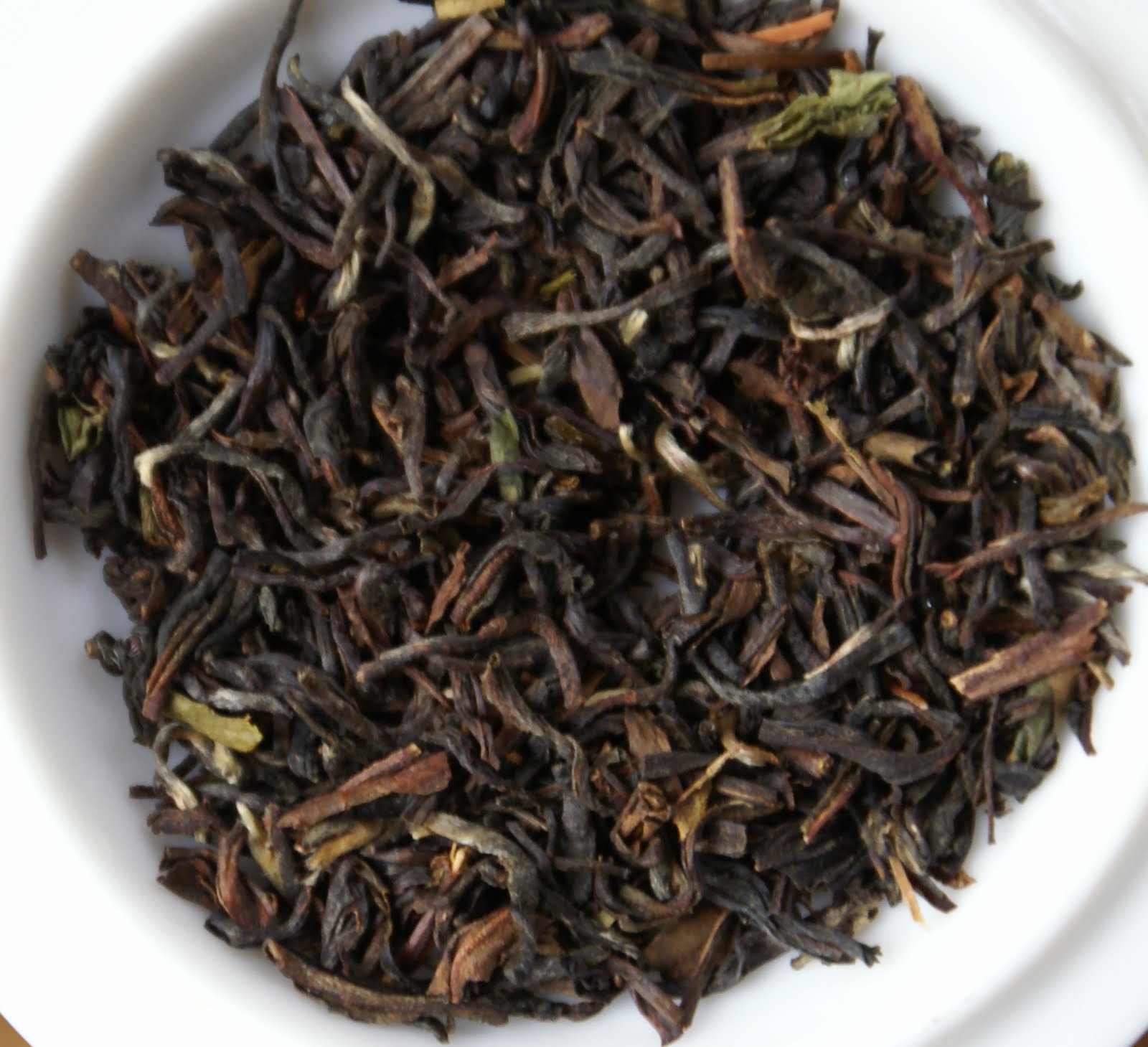 The Autumn Delight is, obviously, from the autumn flush. After two remarkable and one very good tea this one is only good. A standard Darjeeling smallish leaf with some lighter brown hues to the whole but few tips, it boasts a lovely dry leaf aroma: more humid and fresh than the second flushes, gloriously intense fresh wood and walnut notes. The infusion starts with intense fruitiness (candied fruits: mango, cherries), mild spice, good concentration but little in the way of tannins. I like the balance and the feeling of effortless quality that is usual with Jungpana but it’s the least immediately engaging of their 2009 releases: it’s rather simple and one-dimensional. After the dry leaf aroma the biggest moment of interest is in the finish which is poignantly hazelnutty. Representative of an autumnal flush in being less generous, more bone-dry, less fruity than a second flush.
The Autumn Delight is, obviously, from the autumn flush. After two remarkable and one very good tea this one is only good. A standard Darjeeling smallish leaf with some lighter brown hues to the whole but few tips, it boasts a lovely dry leaf aroma: more humid and fresh than the second flushes, gloriously intense fresh wood and walnut notes. The infusion starts with intense fruitiness (candied fruits: mango, cherries), mild spice, good concentration but little in the way of tannins. I like the balance and the feeling of effortless quality that is usual with Jungpana but it’s the least immediately engaging of their 2009 releases: it’s rather simple and one-dimensional. After the dry leaf aroma the biggest moment of interest is in the finish which is poignantly hazelnutty. Representative of an autumnal flush in being less generous, more bone-dry, less fruity than a second flush. 

